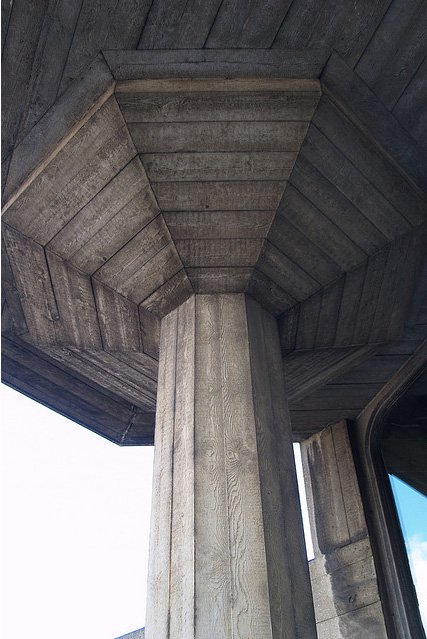béton brut
 The columns under the Queen Elizabeth Hall, South Bank, London. 1967 Hubert Bennett, GLC, architect
The columns under the Queen Elizabeth Hall, South Bank, London. 1967 Hubert Bennett, GLC, architect
This is the underpinning of the Queen Elizabeth Hall on the South Bank, London, built in 1967. The South Bank was a massive cultural centre built after WWII in Lambeth. It epitomises what came to be known in Britain as Brutalism, the term derived from béton brut, or raw concrete, but with all the unfortunate overtones of brutal thuggery.
The image above shows precisely what annoyed Fisac about rough board formwork: it looked more like carpentry than heavy, plastic concrete. That is all true in terms of material, but in terms of construction and the fabrication of buildings there is something quite wonderful about the fragility of wooden boards, carpentered together because they are needed by the big brute to make form. The boards leave their ghostly presence behind, forever imprinted on the obduracy of concrete. The whole building is built twice: once in wood, then again in concrete; the wood is a mould, the concrete the sculptor's material.
We rarely see concrete formed this way for large projects anymore, unless for bridge piers and earthworks, and of course foundations; the concrete mostly visible in buildings is pre-cast, all the slots, channels, fixing points and surfaces carefully designed and controlled off-site. This gives the surfaces the ability to be decorative, less forceful than rough poured concrete. I really dislike precast concrete. There is so much of it.
